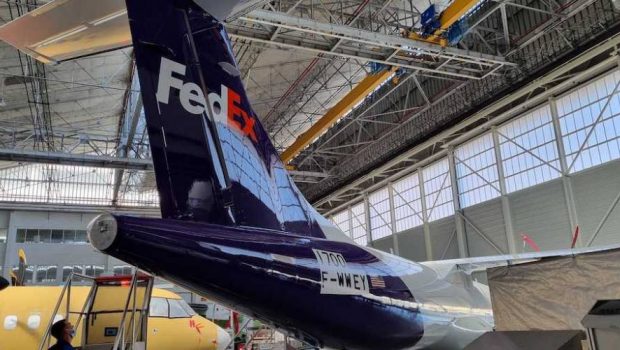ATR Will ‘Piggy-bank’ on Airbus for Hydrogen-fuel Technology
ATR will consider hydrogen fuel as part of its drive to improve the environmental performance of its regional airliners, though it will rely on shareholders Airbus and Leonardo to research and develop the technology. “We will be 'piggy-banking' on our big shareholders,” ATR CEO Stefano Bortoli said during a briefing at the turboprop manufacturer’s Toulouse headquarters. “We are very pragmatic. We are a company with a staff of 1,200; we do not have 1,000 engineers to dedicate to R&D; we do not have the big labs or large test rigs,” he explained. ATR will consider “every” technology, including hybrid-electric, that reduces CO2 emissions and integrate it onto its platform, as long as it proves “available and affordable,” Bertoli insisted.
Under a project called ZEROe, Airbus has begun developing three concepts for a zero-emission, hydrogen-powered commercial aircraft that could enter service by 2035. One of the designs centers on a twin-turboprop powered by hydrogen combustion in modified gas-turbine engines that could seat up to 100 passengers and fly to a projected range of up to around 1,000 nm.
The hydrogen solution has to be assessed, ATR chief engineer Daniel Cuchet corroborated, though he cautioned that the Airbus colleagues haven’t yet determined the best pathway for hydrogen use. Moreover, hydrogen might not work for ATR. “We are not building an aircraft for engineers,” he remarked. “Our customers want a robust, affordable, and versatile aircraft. Not all our operators would be interested in using hydrogen because it is not feasible for them, for economic reasons or because the relevant hydrogen infrastructure will not be in place. Many of our aircraft land on unpaved runways on remote islands.”
Until the hydrogen technology is mature, blending and eventually replacing conventional fossil-based kerosene with sustainable aviation fuel (SAF) is a “good short-term solution,” Cuchet asserted. All ATR aircraft have earned certification to fly with a 50/50 blend, and the company aims to gain certification for 100 percent SAF usage by 2025.
Like other airframers, 2020 marked a bad year for the Franco-Italian turboprop manufacturer. The situation is improving, and deliveries have begun to accelerate after a near-standstill last year. Some 25 turboprops—a mix of ATR 42, the larger ATR 72, and ATR 72Fs for FedEx—now stand in line for final assembly. That compares with on average 10 units pre-Covid, according to the head of the final assembly line, Bertrand Villeneuve.
ATR aims to deliver “at least” twice as many airplanes this year as it did in 2020 when it handed over just 10 examples to customers. Also, the number of orders should exceed last year’s low level of three airplanes net. So far this year, ATR has signed an agreement with Greek airline Sky Express for six new ATR 72-600s, but it expects to announce more orders at the Dubai airshow in November.
ATR will focus on the 30- to 50-seat segment to return to growth, Bertoli affirmed. The ATR 42/ATR 72 split now stands at 20/80 but that could evolve to 40/60 following the new strategy, senior vice president commercial Fabrice Vautier said. ATR estimates that around 900 aging 30- to 50-seat aircraft will need replacement in the next five to seven years; the U.S., Australia, Canada, and Japan are the main target markets. “We will be defending vigorously the leadership we built in that segment,” Bertoli emphasized, adding that the segment carries little competition.
The forecast excludes China, where ATR sees a lot of scope for growth, mainly for 30-seat turboprops to serve the country’s general aviation segment and 50-seat turboprops to connect regional airports. However, accessing the market is proving difficult. ATR continues to wait for the Civil Aviation Administration of China to issue permits for the ATR 42 to fly in the country. The European airframer expected ATR 42-600 type certification validation in China in autumn 2020; it now pins its hopes on mid-2022. Bertoli diplomatically refrained from speculating on the reasons for the delay, saying only that “all technical topics were resolved in due time.”








Gloss